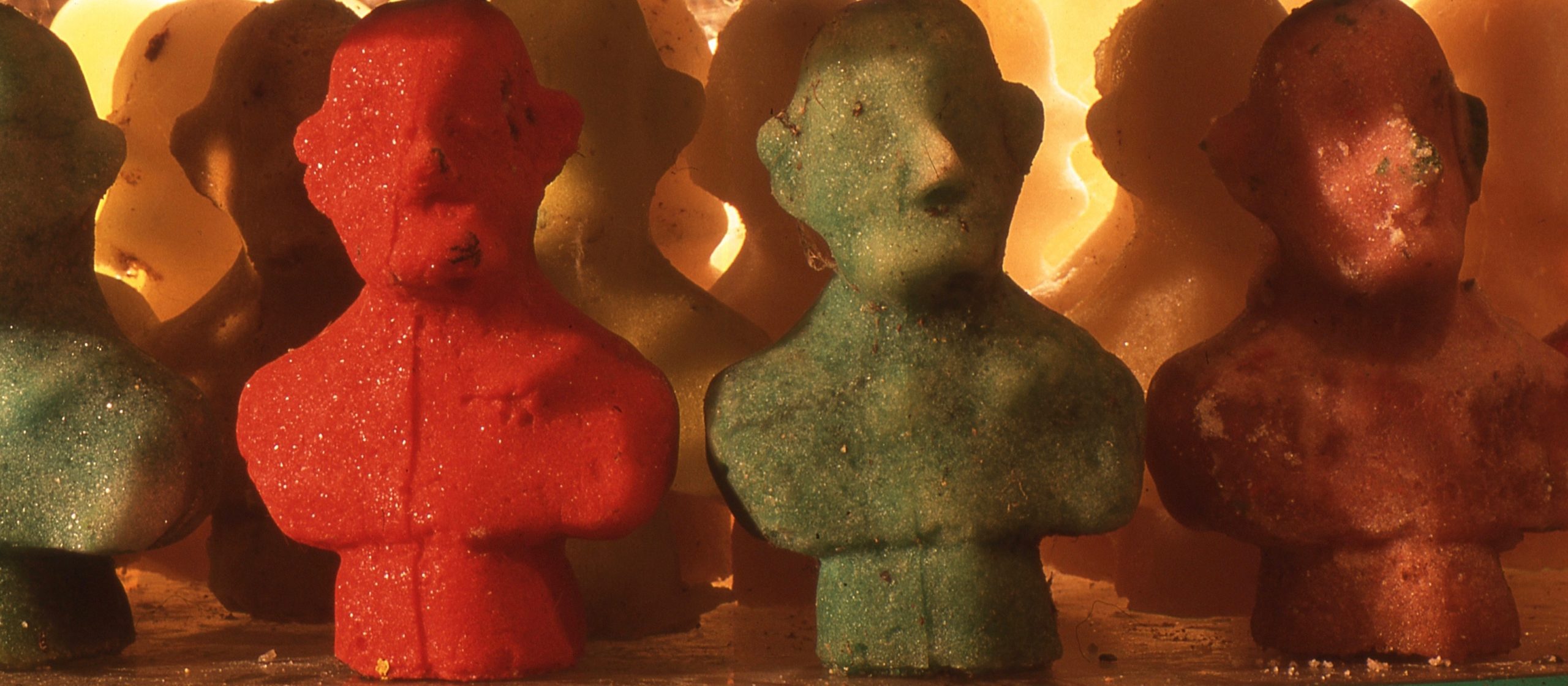Dieter Roth’s mould museum (one project component)
The starting point for the investigations is the Schimmelmuseum (Hamburg), which was initiated by Dieter Roth at the beginning of the 1990s and existed until winter 2003/2004. Smells of decay and decomposition emanate from the shimmering, dusty, glittering, fluid, morbid-looking art materials. The visual, tactile, olfactory and even gustatory and auditory experience of decay and mould objects is transported. In keeping with his anti-static concept of art, the artist incorporated all classical genres into his oeuvre and developed his works further with transforming, processing materials, taking into account the factors of chance and time. Mould as a material inevitably leads to art historical questions, the need for institutional critique, the question of the normative structures of aesthetic perceptions or semantic charges of transforming and dissolving works of art.
Both materially and conceptually, the Schimmelmuseum brings together central developmental and decay-specific aspects of the artist’s work. Food and decay objects such as the lion self, self and sugar towers produced on site as well as “windows” filled with spices, fruit and vegetables and sugar mats show active processes of work change and decay. The organic dissolution of the works is intended by Roth. Furthermore, the artist lived and worked simultaneously in places like this cosmos of decay. In addition to the Schimmelmuseum, the Dieter Roth Museum with studio (Hamburg) and the former workroom with self-tower and lion tower (1969-1998; Kunstmuseum Basel / Gegenwartskunst) show this. Studio, museum and place of living in the moment of the work’s creation and organic decomposition until the demolition of the architecture in 2004 were united in the Schimmelmuseum. Thus it is considered exemplary in the history of art.
At this location in Hamburg Harvestehude, Roth bundled his concept of art in a studio and object-specific manner in the processes of work creation and decay, in the museum presentation as well as in the architecture itself. The Schimmelraum, which was established after the destruction of the Hamburg Schimmelmuseum, also provides a basis for the ongoing development and decomposition processes of numerous objects and installations, so that the material processes continue to unfold unhindered. Roth’s artist’s kitchens, the chocolate and coloured sugar busts, fruit pictures, sugar mats, in fragmented chocolate and garden gnomes woven around by spinning webs bear witness to both the manufacturing processes and the impressive traces of time, transience and decay.
Dieter Roth, Zuckerturm (Schimmelmuseum), 1994. Fotografie: Heini Schneebeli, 1999
© Dieter Roth Foundation, Hamburg / Courtesy, Hauser & Wirth.
